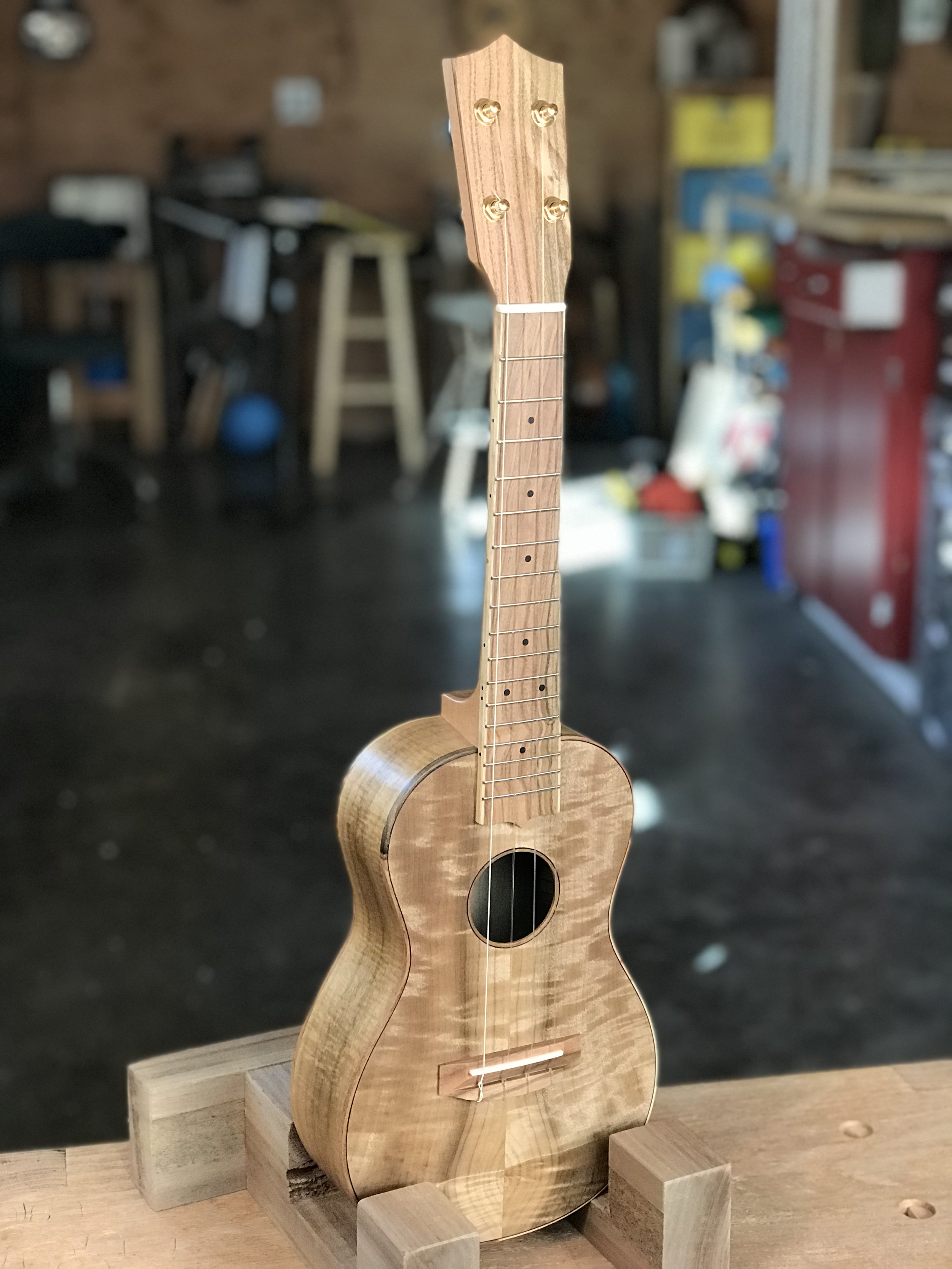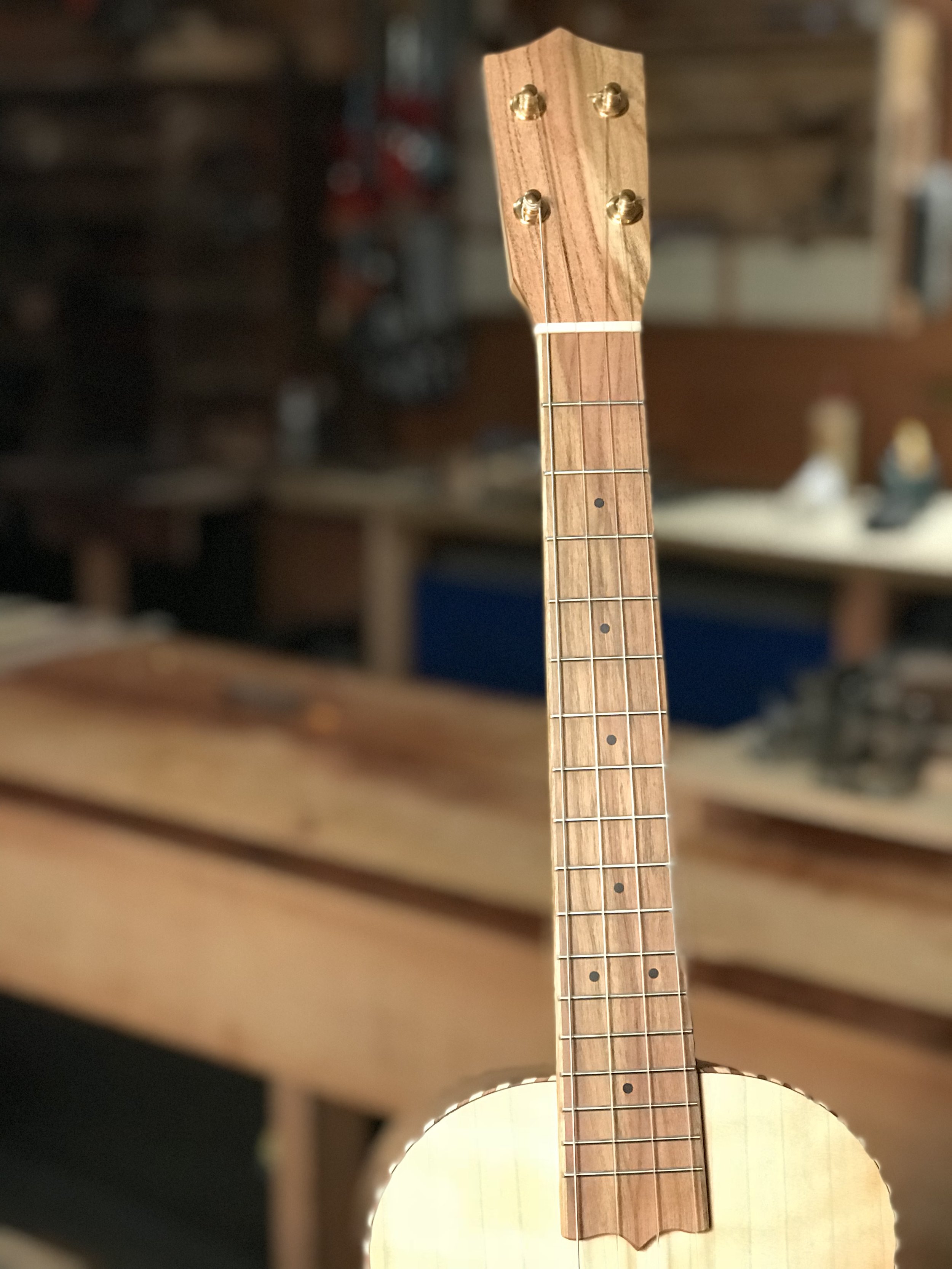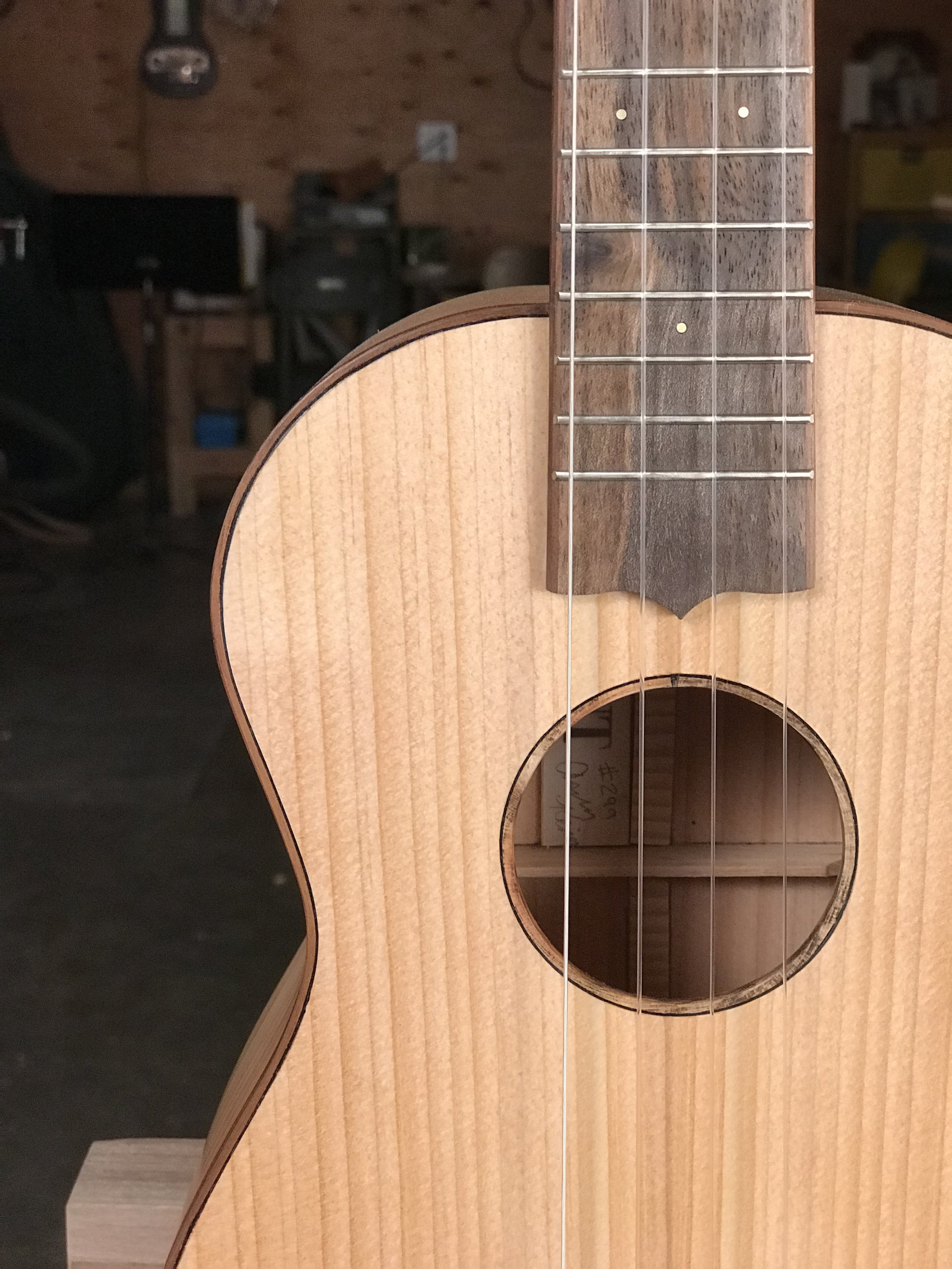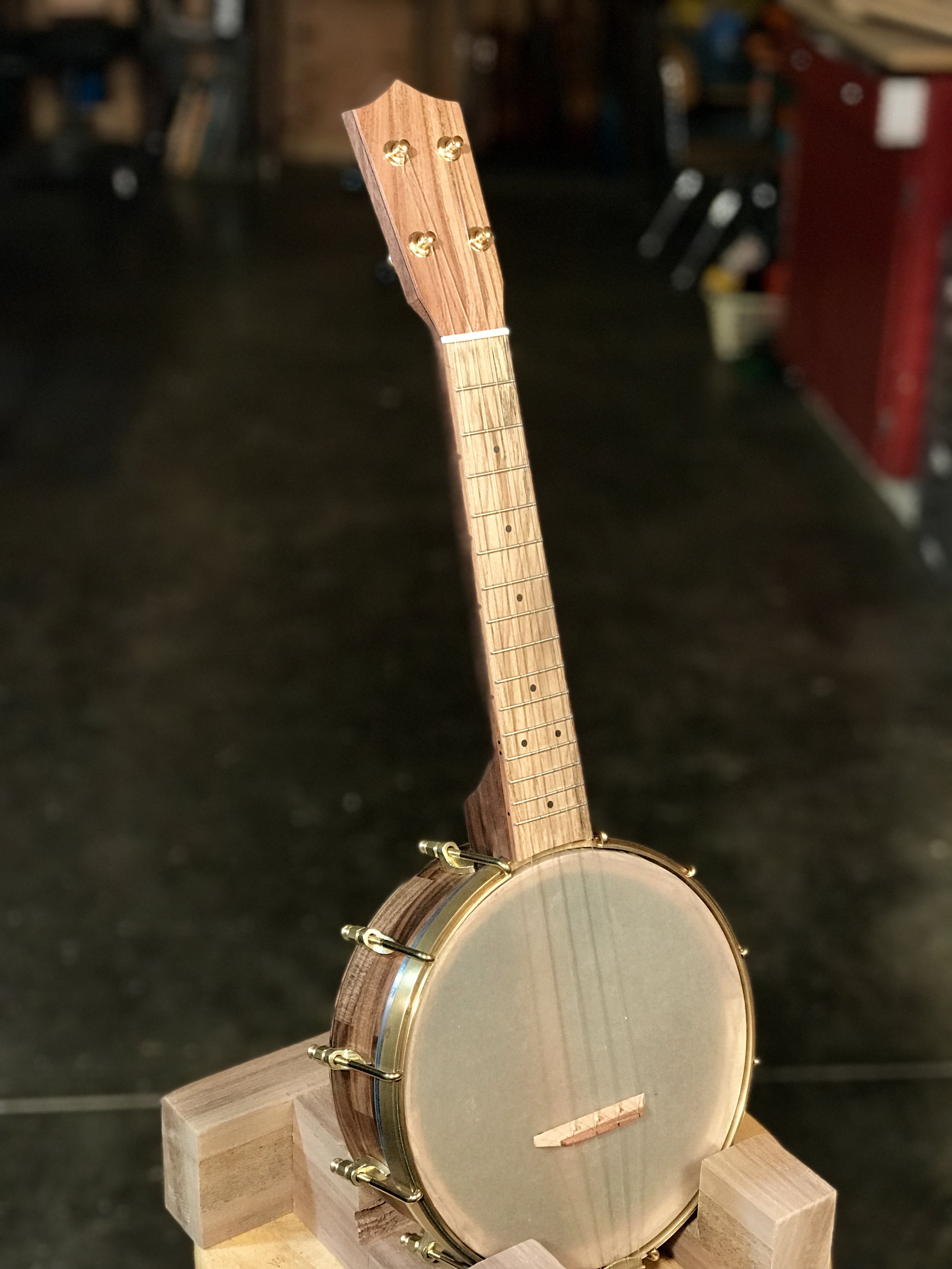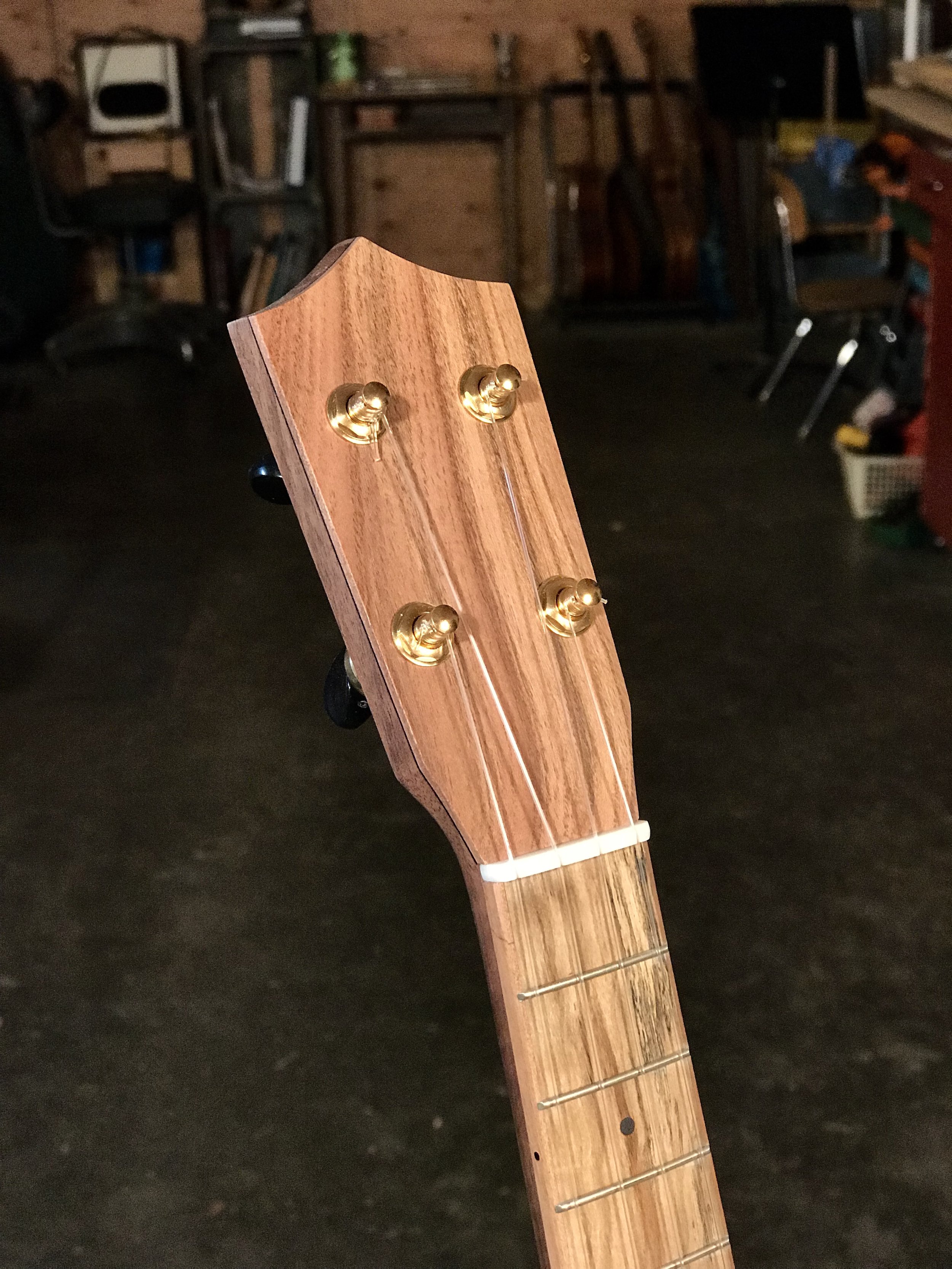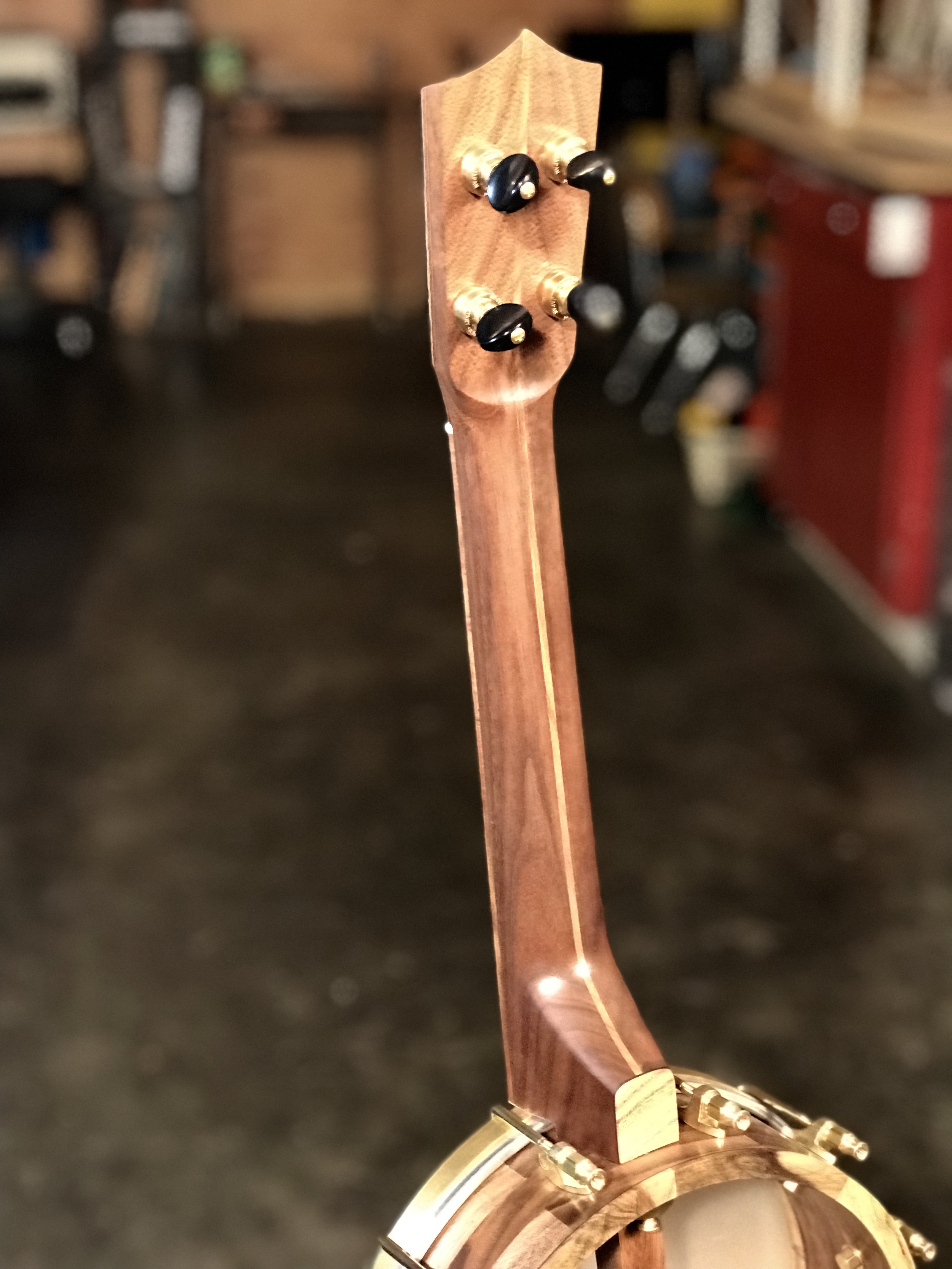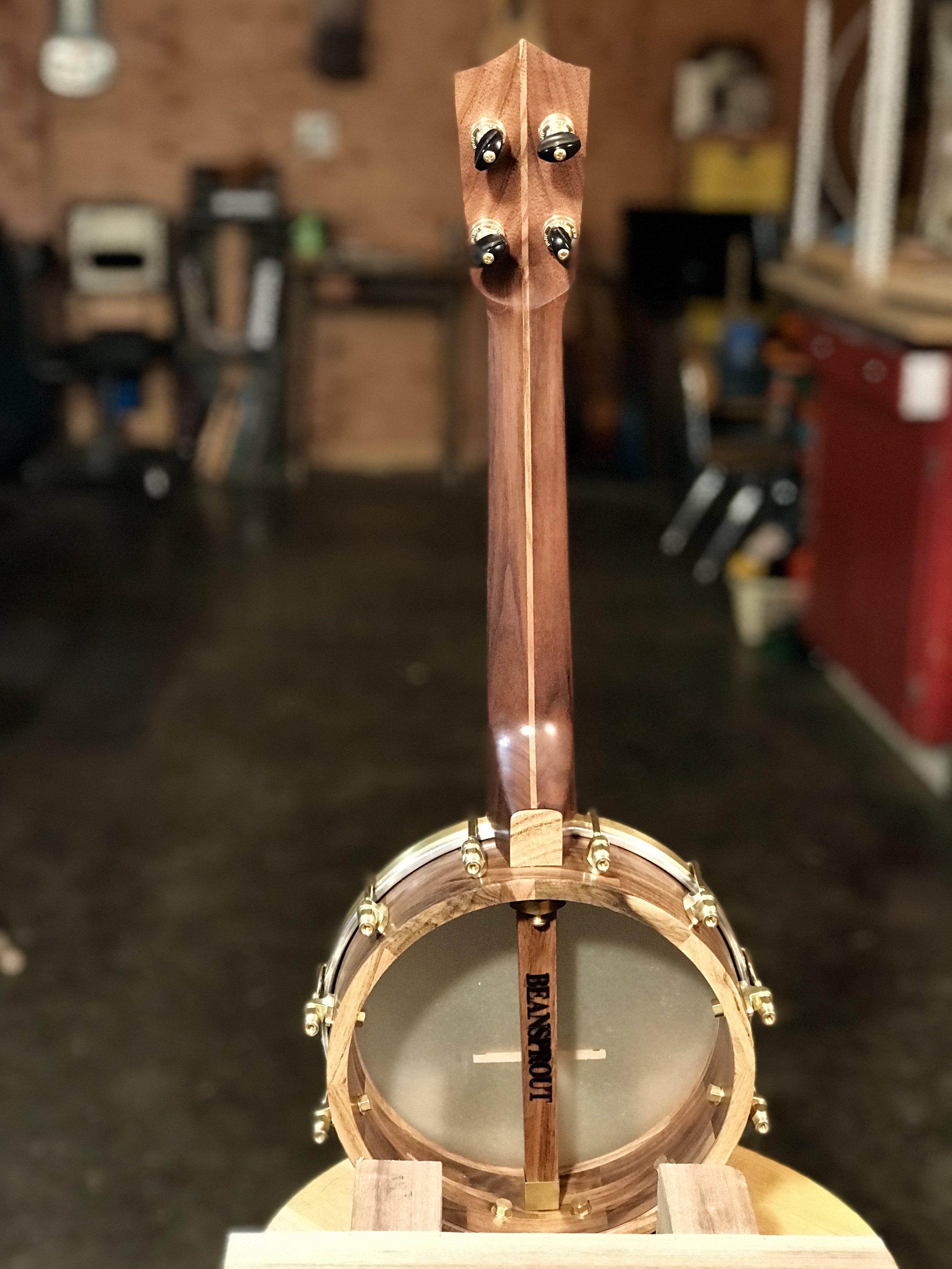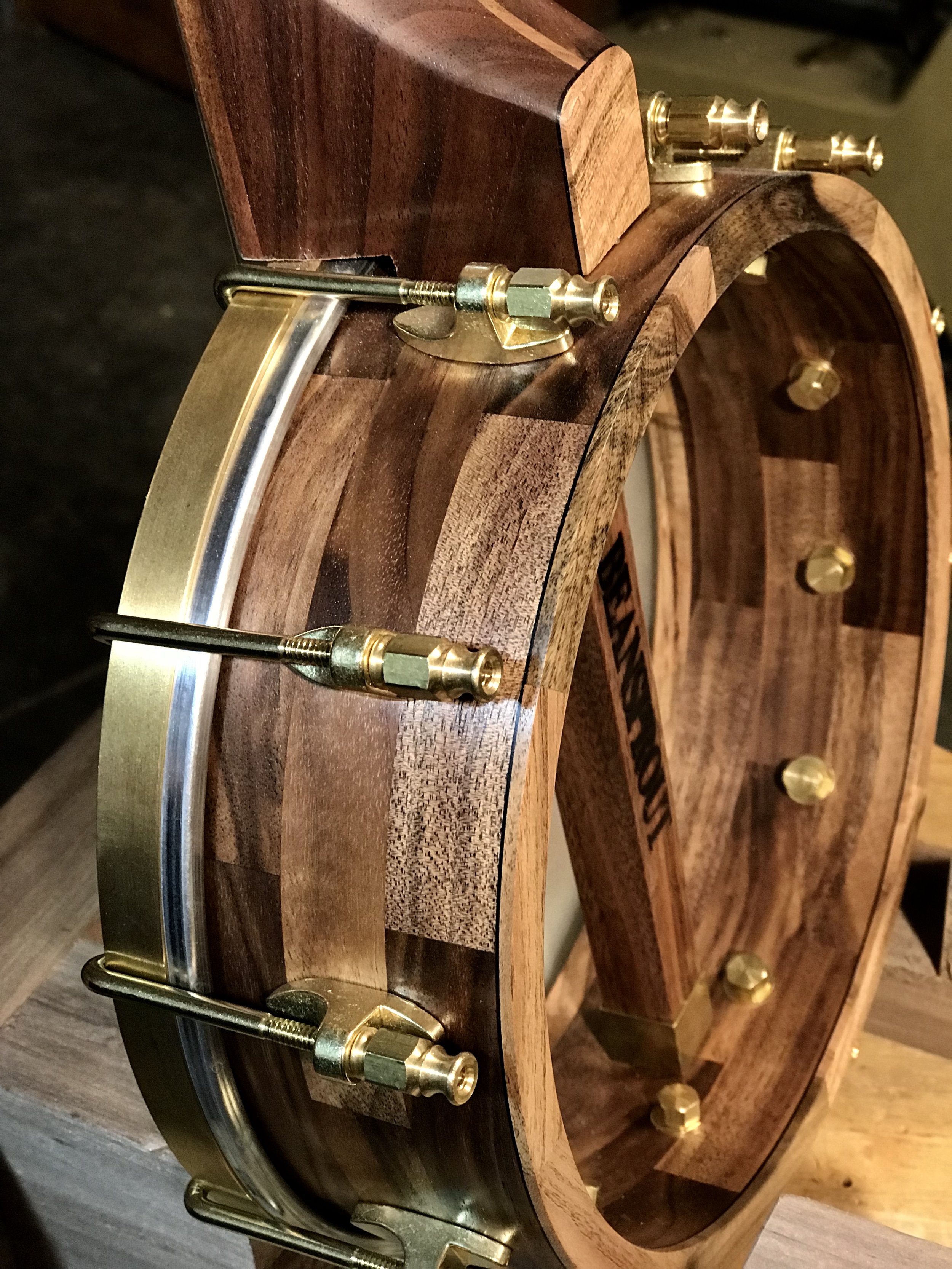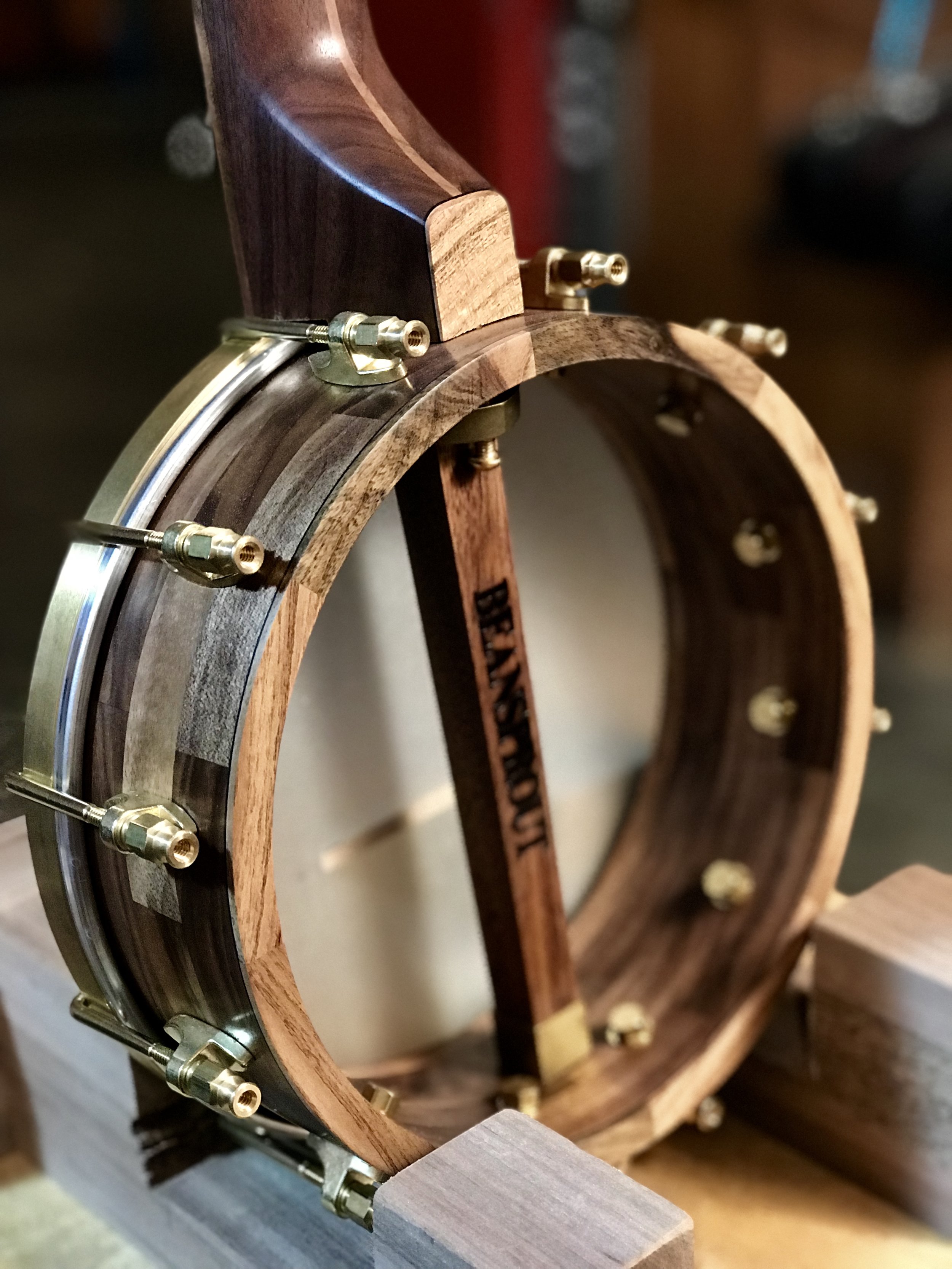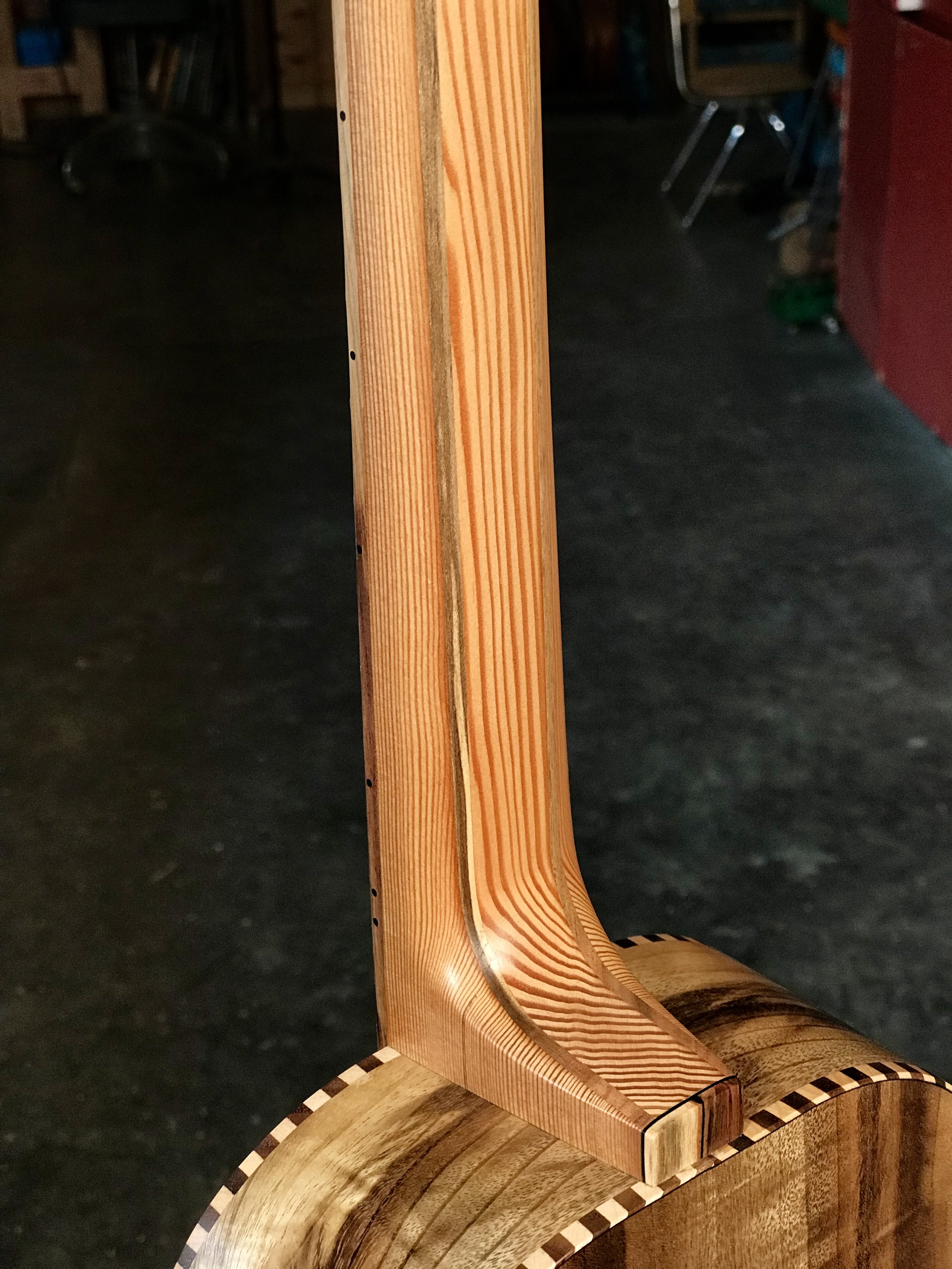When I was a young man, I was very interested in the old National resophonic instruments. I thought there were cool because they were loud, good for busking and pounding out rhythms in a hot jazz band or jug band combo. It took a while, but I eventually found musicians who used reso instruments but didn’t always play loudly. Instead, they used the metal cones inside to create a wide and expressive dynamic range, wielding an instrument of nuance AND power.
Since then, I have enjoyed the process of getting my own instruments to do the same and am pleased with my small successes. These banjo ukes, especially the walnut ones, are a nice example. Full dynamic range, easy to play, a rich tone and handmade in US from sustainable woods. This banjo has walnut from the Carpenter Ant stash in Portland and PIstachio from California Orchards. Thanks to Anne for two orders this year, she is ready for any musical adventure comes her way!

























